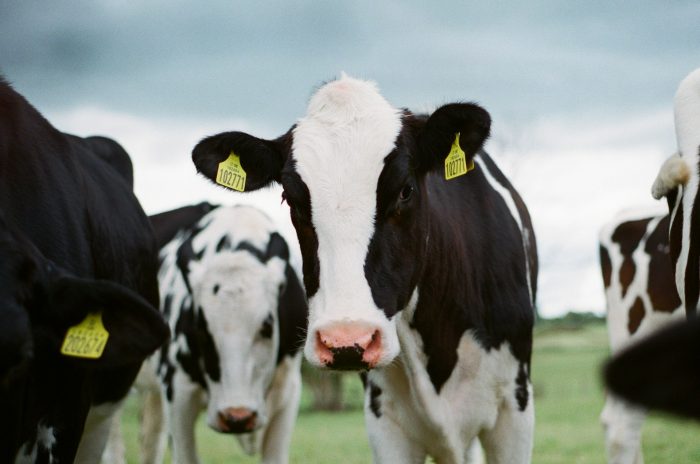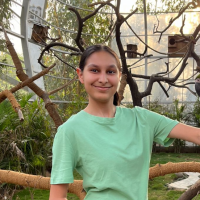{*Did you know you can write on Elephant? Here’s how—big changes: How to Write & Make Money or at least Be of Benefit on Elephant. ~ Waylon}
~
I have spent most of my life hearing about the climate crisis.
As a child, the buzzword was climate change, but now it is accurately changed to climate crisis.
As someone who has loved nature for as long as I have lived, I was excited when I got the opportunity to write a high school research paper on our food choices and their impact on climate change. In this essay, I focus more on India’s role in the situation as India holds the largest population in the world and has grown to be the fifth largest economy in the world.
This research was an eye-opener for me as I now clearly understand how the patterns of meat and dairy consumption over the last 50 years have increased in alarming magnitude. While I thought that I had adequate information about this shift leading to greenhouse emissions from various articles I had read, I realized that I had only scratched the surface. From research, I learnt that Maharashtra, my home state, is a top-five meat-producing state. This figure seemed unrealistic at first since India is not a heavy meat-eating country, but the cumulative and long-term effects don’t seem so small.
Keeping in mind the lactose-vegan dietary preferences of India, I learnt that 60-70 percent of people in my country eat meat in some form and India has the highest livestock numbers as it is the largest milk producer of the world. The interface between factors like per capita income, population, urbanization, and meat and dairy consumption leads to the issue being more complex.
In the research paper, I explored key issues that arise globally from unsustainable consumption and production of meat and dairy, how they catalyze climate change, and personal reflection to emphasize the role of nations and individuals in balancing consumption and production, while exploring possible ways to counter negative impacts.
Globalization, Capitalism and Urbanization
The global demand for meat and dairy products is expected to double by 2050. As the livestock industry grows exponentially in response to these consumption demands, unsustainable food systems impacted by capitalization and urbanization contribute not only to deforestation, loss of biodiversity, and decline of water tables, but also to 30 percent of all human-driven greenhouse emissions. This creates a dilemma of addressing food security while risking agrarian emissions that would take up the world’s carbon budget by 2050. It is therefore one of the most challenging climate-related challenges faced by the world today.
Causes:
The exponential rise in world population, which is estimated to reach 9.8 billion by 2050, has transformed agricultural land use; 77 percent of agricultural land is used for livestock and only 23 percent for crops.
Furthermore, accelerated urbanization in developing nations has led to dietary shifts toward more processed and prepared food in response to longer working hours and limited time to cook. Parallelly, technological advancements have fueled infrastructure, with cold chains permitting perishable dairy and meat products to be traded widely, its accessibility thereby altering food consumption patterns.
As India has grown to become the world’s fifth largest economy, its contribution to global milk supply has also grown to a whopping 23 percent. Analyst Monica Ganley confirms “India is poised to consolidate its position as the world’s largest producer and consumer of milk.”
This growth is supported by the capitalistic worldwide demands for animal products, promoted on the domestic level through urbanization that allows farms in rural India to export these products and globalization-spurred supply chains that make trade of meat and dairy products accessible.
Lastly, an unbridled demand for meat has intensified capitalistic commoditization and farming of animals driven largely by profit motives and the need to increase production at any cost, evident in the growth of fast food chains like Burger King and McDonalds, leading to unsustainable production and consumption patterns that negatively fuel climate change.
This has spiked demand for meat, while companies like Nestle and Danone have capitalized this demand to promote water-intensive dairy industry in states like Punjab, traditionally a less water-intensive wheat-growing state, leading to its fast depleting groundwater. Lastly, dairy-heavy diets predicated by Indian food norms also sustain heavy production.
Consequences:
By 2050, the UN anticipates worldwide meat consumption will increase by 76 percent, while production has quadrupled over the last 50 years, resulting in unsustainable practices of overfishing, destruction of wildlife, deforestation, and depletion of freshwater resources. Grazing and farming lands have been abused with a preference for feed-crops over food-crops leading to a 36 percent increase in fodder demand over eight decades as seen in the expansion of soybean farming in Latin America.
The carbon footprint of meat is 24 times higher than that of pulses (lentils). Livestock fodder farms rapidly drain freshwater reserves as they require 200 million to 1 trillion liters of water daily to meet demands of over 100 million people. In addition, a rapid degradation of soil and pasture lands is caused when an average of 42 animals graze per hectare in Indian pastures to meet these inflated demands, higher than the recommended threshold of five animals per hectare, leaving animals devoid of grazing pastures. Maharashtra, one of the top five buffalo meat-producing states, presents the highest percentage of degraded pasture lands at 0.43 percent of the total geographical area of the state. This figure may seem minuscule at present, but long-term effects might be devastating.
Jimmy Borah, an experienced biodiversity conservationist explains that, “converting the livestock into meat is more responsible for greenhouse gas emissions than the livestock alone.”
Moreover, the capitalisation of livestock incentivised by profit motives ignores most welfare norms industry consuming 80 percent of the world’s antibiotics to prevent the outbreak of infectious diseases, yet three out of four emerging human diseases are a result of this capitalisation, including the most recent COVID-19. According to the United Kingdom government, superbugs would be the leading cause for deaths by 2050 as animal-related food systems account for approximately 30 percent of all human-driven greenhouse-gas emissions.
India needs to be concerned about the environmental damage, energy loss, and rising surface temperatures caused by an estimated 200 million tonnes of CO2 equivalents released annually by Indian livestock.
The infiltration of capitalistic motives in an agrarian society like India that does not subscribe to the western model of “big farms” has led to large-scale inefficiencies in livestock farming, causing unregulated levels of emissions that cannot be contained in the absence of stringent government policies.
Courses of Action
The World Bank has adopted an integrated approach toward increased sustainability and reduced emissions meant to address the cross-functional challenges of food security and climate change under which Bangladesh and China have received support to improve animal health and boost farmer resilience while controlling climate.
My thoughts: it is important for large economies with scaled demand like India and the United States to adopt similar programs and seek global support to reduce greenhouse gas emissions through effective use of technology but within an ethical framework.
India has pledged to halt deforestation and cut methane emissions by 30 percent by 2030 at Glasgow’s COP26.
My thoughts:
>> To achieve this, I feel India will benefit from a comprehensive policy like transferring subsidies from livestock farming to plant-based farming systems so as to prevent capitalisation of livestock, and also restrict the number of livestock per farm.
>> Empower the marginal farmer with smart technology and improved output.
>> Create organized domestic and international supply chains for such produce and implement heavy fines on livestock-related pollution with bigger taxes on animal products.
Individual Responsibility
While governments work out their policies and implementation, we as individuals can do our part by consuming less meat and dairy. Consuming more plant-based foods (which are already in abundance in various cultures, especially in India) directly makes impacts by reducing meat and dairy production, and on a larger scale can affect the supply-demand dynamics and compel companies and farmers to move toward plant-based, environmentally friendly products.
~
Evaluation of sources: Most of the research data has been sourced from reputed sites such as USDA, FAO, and World bank. References have been taken from sites of trusted media sources or from research papers and articles published by renowned educational institutes to eliminate any bias. Testimonials of experts have been sourced from reliable print media sites. Any analysis made is based on a study of charts, graphs and data from the World Bank site.
Sources:
Rising Consumption of Meat and Milk in Developing Countries Has Created a New Food Revolution
Mapping the Consumption of Milk and Meat in India
These 2 factors drive meat consumption worldwide
Number of cattle and buffaloes
Climate change and livestock: Impacts, adaptation, and mitigation
How is India’s meat industry impacting the environment?
~
{Please consider Boosting our authors’ articles in their first week to help them win Elephant’s Ecosystem so they can get paid and write more.}



Read 2 comments and reply